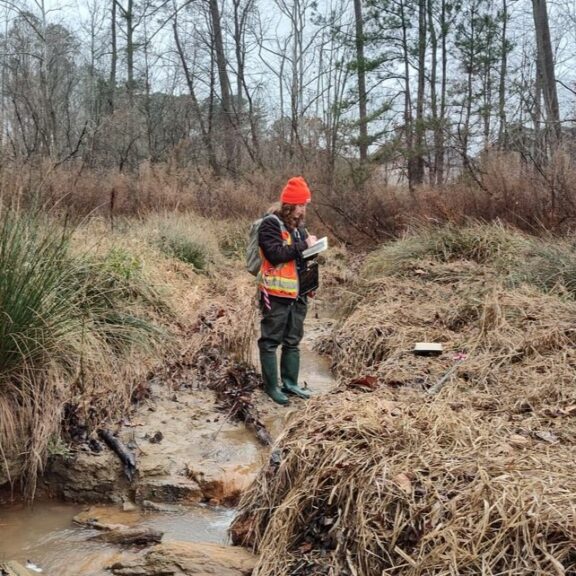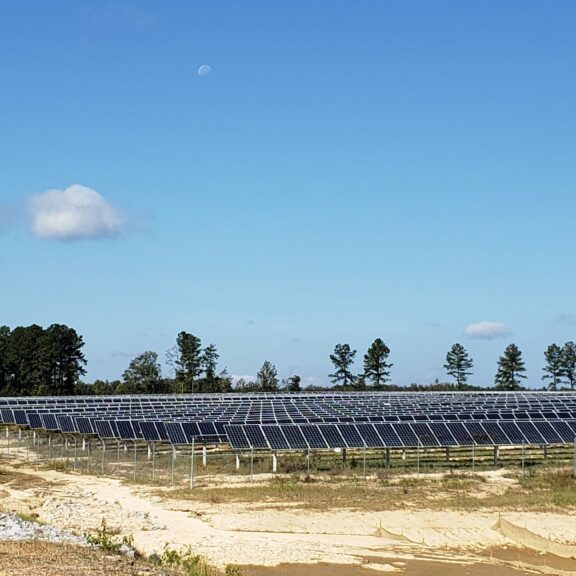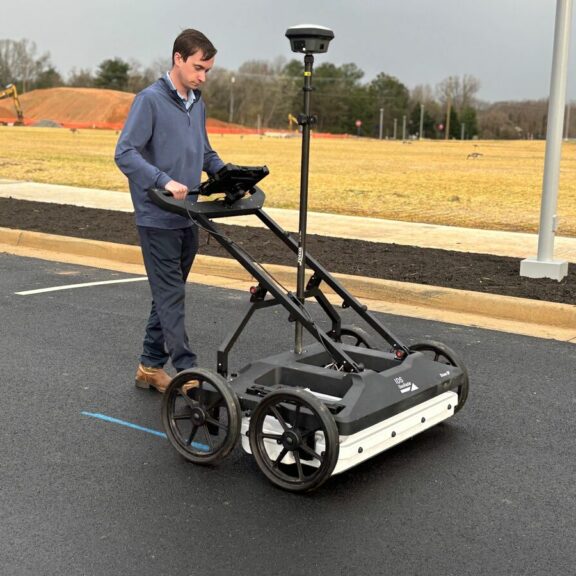Subsurface Utility Engineering (SUE) is a critical aspect of modern civil engineering projects, aiming to mitigate the risks and costs associated with underground utility line breaks. At Timmons Group, our SUE group employs advanced technology and meticulous methods to provide our clients with the most accurate subsurface utility data. Among our array of tools, the vacuum excavator truck stands out for its efficiency and precision in locating underground utilities.
What is a Vacuum Excavator Truck?
A vacuum excavator truck is a specialized vehicle designed for non-destructive digging. It uses high-pressure air or water to loosen soil, which is then removed by a powerful vacuum system. This method, known as soft digging, is ideal for safely exposing buried utilities without damaging them.
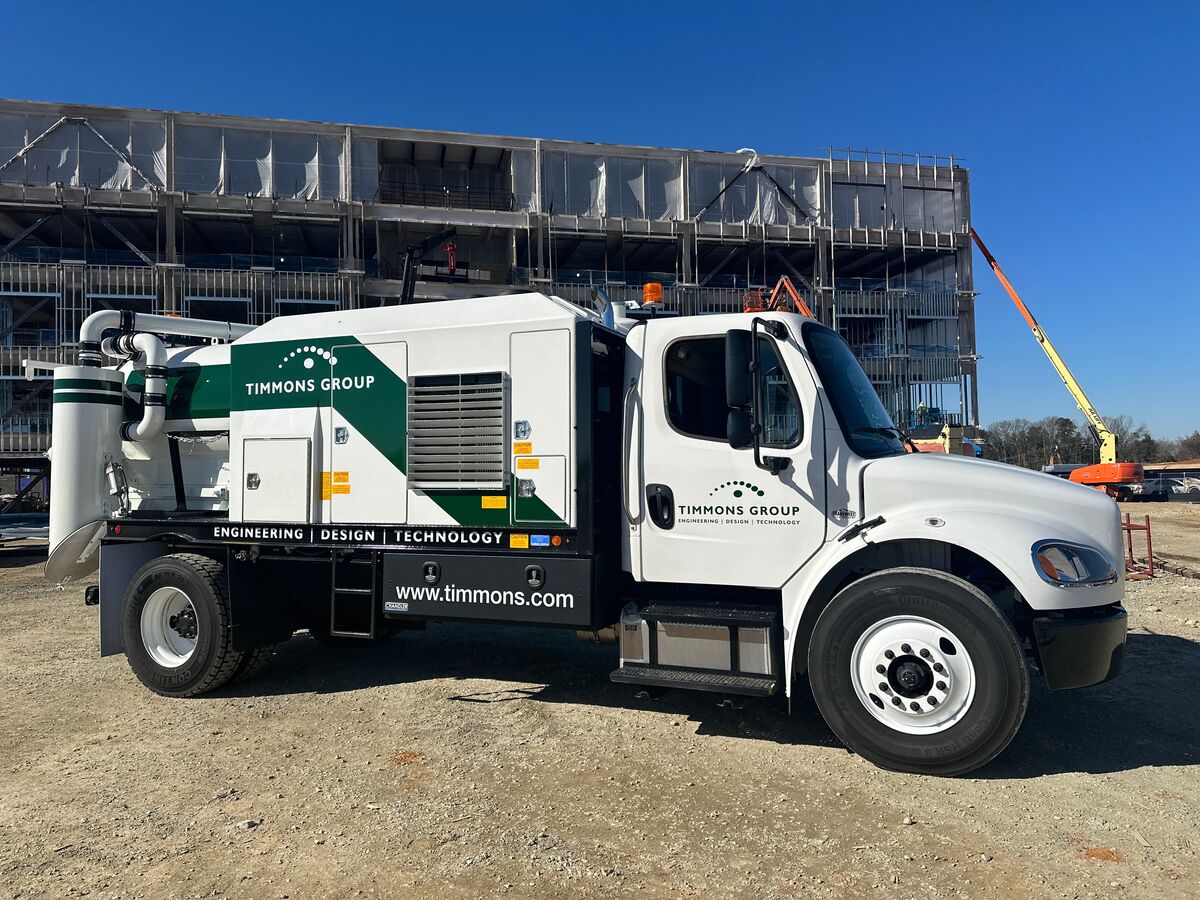
How Does It Work?
- Site Preparation and Safety Measures
Before the vacuum excavator truck arrives on-site, our team conducts thorough record research and coordinates with utility owners to gather existing utility maps and records. This preliminary step ensures we have a comprehensive understanding of the potential underground hazards. Safety measures are also put in place to protect our crew and the public, including site markings and securing the excavation area.
- High-Pressure Air or Water
The vacuum excavator truck uses a high-pressure air or water system to break up the soil. When air is used, it’s often referred to as air vacuum excavation, whereas water use is termed hydro vacuum excavation. Both methods are effective, but the choice depends on soil type and project requirements. Air is typically preferred in dry conditions, while hydro excavation is more efficient in compact or frozen soils.
- Vacuum Extraction
Once the soil is loosened, the powerful vacuum system sucks up the debris into a holding tank on the truck. This process is precise and minimizes the risk of damaging underground utilities. The vacuum system can handle various soil types, including clay, sand, and gravel, making it versatile for different project sites.
- Utility Location and Documentation
After exposing the utilities, our vacuum excavation specialists accurately measure the horizontal and vertical positions of the utilities. This data includes the type, size, and material of the utility, which is crucial for planning and design purposes. The exposed utilities are documented and marked for further surveying and analysis.
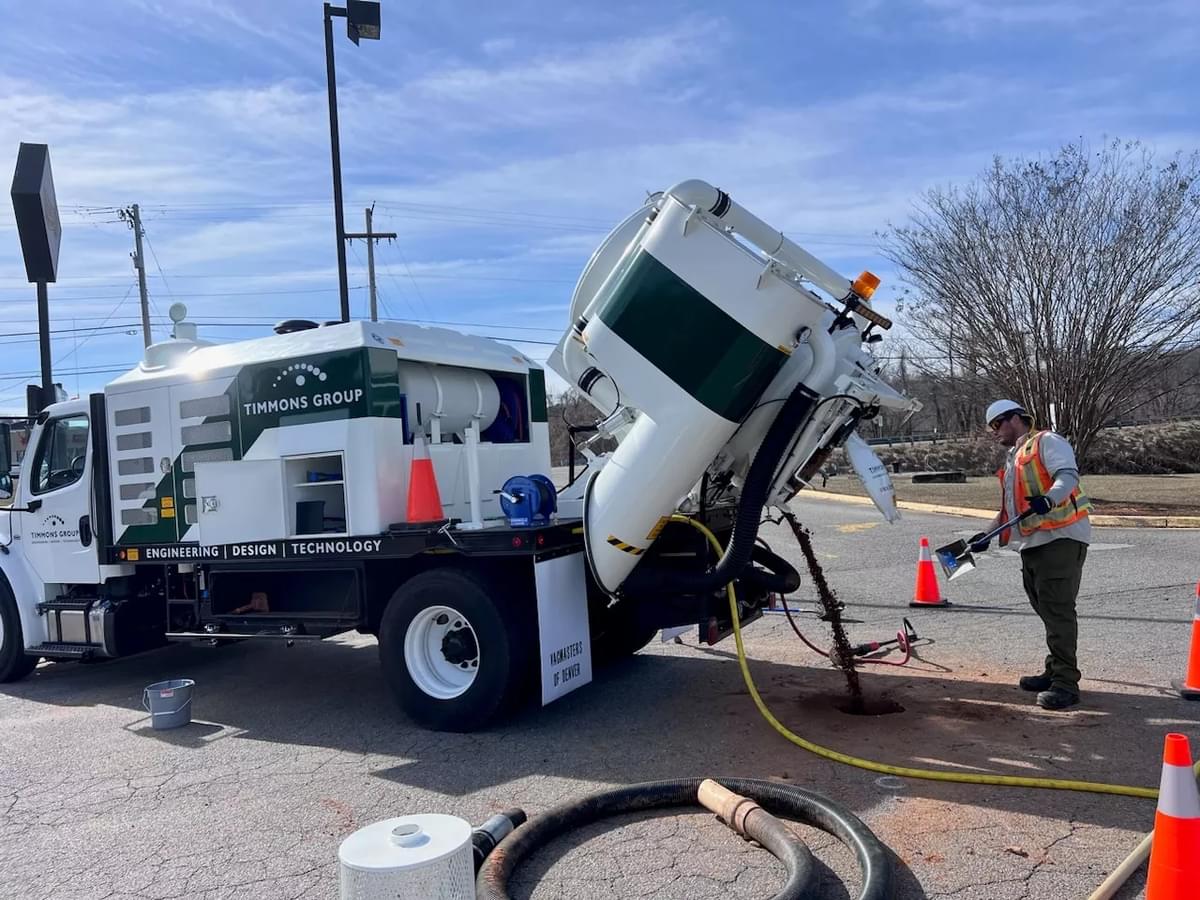
Advantages of Using a Vacuum Excavator Truck
The use of a vacuum excavator truck in our SUE practice offers numerous benefits:
- Precision and Safety: The non-destructive nature of vacuum excavation significantly reduces the risk of utility damage, enhancing safety for workers and the public.
- Efficiency: Vacuum excavators can quickly and accurately expose utilities, minimizing delays and keeping projects on schedule.
- Cost-Effectiveness: By preventing damage to utilities and avoiding project stoppages, vacuum excavation helps control costs and reduces the risk of expensive repairs or downtime claims.
- Environmental Protection: The controlled excavation process prevents the accidental release of hazardous substances, protecting the environment from contamination.
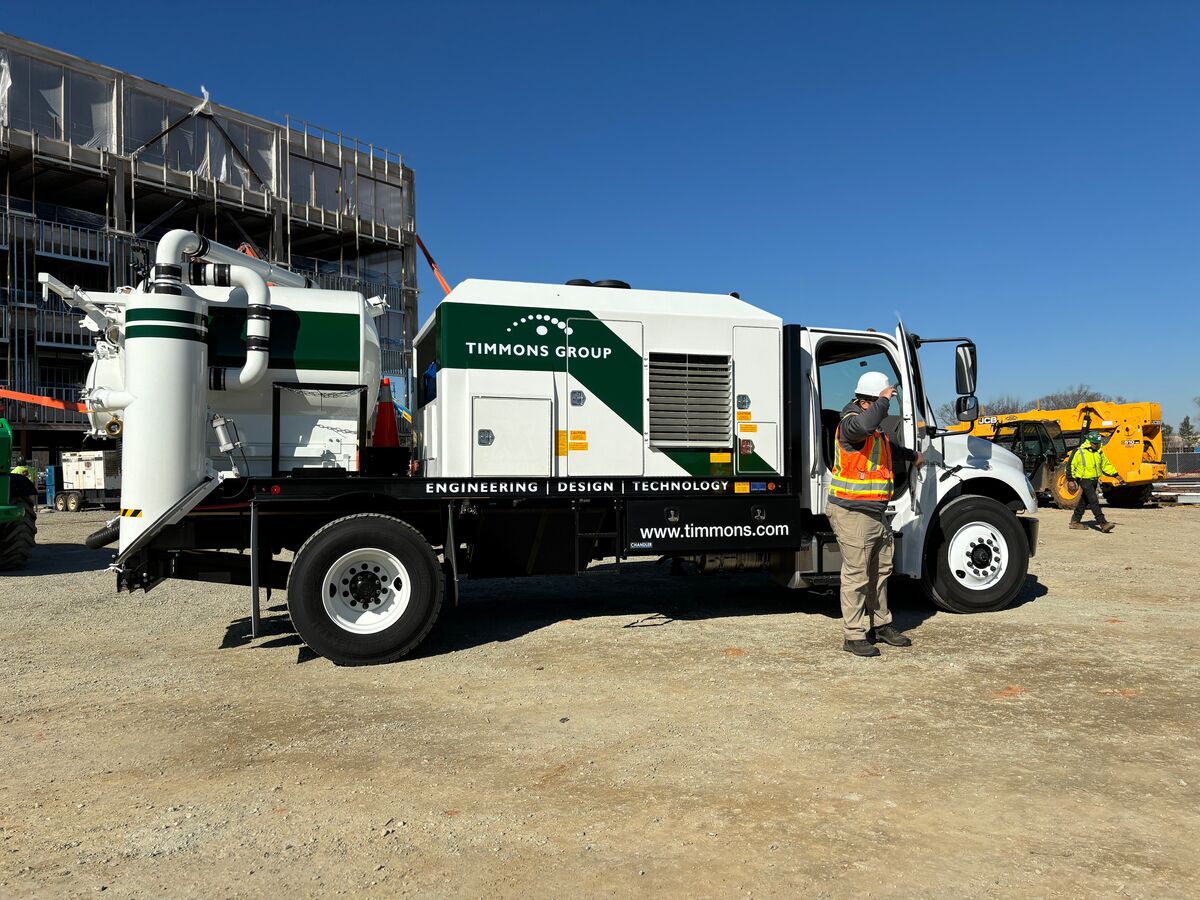
At Timmons Group, our commitment to integrating advanced technology with industry best practices is evident in our use of vacuum excavator trucks for subsurface utility engineering. This approach aligns with the Federal Highway Administration’s (FHWA) endorsement of SUE procedures and the demonstrated cost savings identified in studies, such as the one conducted by Purdue University.
By leveraging the capabilities of vacuum excavator trucks, we provide our clients with accurate, reliable subsurface utility data, ensuring informed decision-making and successful project outcomes. Our team of experts tailors SUE services to meet your specific needs, budget, and schedule, reinforcing our reputation as a trusted partner in the engineering industry.
Ready to get started? Contact our team to see how a vacuum excavator service can enhance your project’s deliverables.

